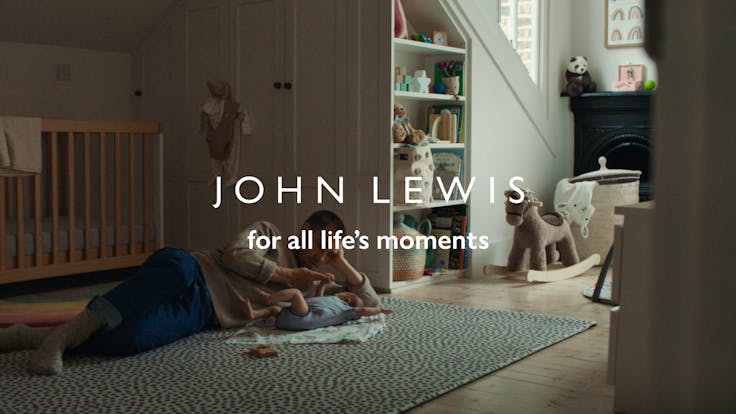Only people can give the gift of effectiveness
Having the right people at the heart of effectiveness programmes is the difference between succeeding and failing.

It’s that time of year again when we put on our sparkle, don our Christmas cracker paper hats, and head out of the office and get to know each other better.
There’ll be heartfelt thanks and lots to learn as we find out what everyone chose for a Secret Santa gift. And that’ll be important. Not just to a jolly Christmas, but also to how well 2024 comes out.
Cheesy as it is, to get the best outcomes, we all need to be singing from the same hymn sheet.
Efforts to improve the effectiveness of marketing succeed when they put people at the heart of their programmes.
And, although it happens more quietly, the opposite is true too. When effectiveness programmes fail, it’s nearly always because the relevant people weren’t properly included, and brought on board.
Effectiveness programmes fail if they aren’t people-centric
Do your effectiveness analysis findings get implemented? If not, why not? What needs to improve? That’s a hard set of questions to ask of a CMO or marketing director, but we at Magic Numbers asked them anyway when we interviewed 11 senior marketers in large complex businesses.
What we discovered is that these marketers, unbeknownst to each other, are often in the same boat. They undertake analysis and get recommendations, but then struggle to implement them and reap the rewards.
And the reason why is all to do with people and change.
Sometimes the blocker is a person whose job is diminished by the needed change. At other times it’s a suspicious numbers person, often in finance. Or there’s a co-ordination failure, where the needed change involves two different departments that don’t typically work together.
The below quote – from an anonymous CMO in the research – is a typical description of what happens:
“If this model is telling them things are great then they’re a hero, everything’s great, they don’t need to change anything. But, if it is the other way around, suddenly there’s a raft of reasons why they won’t change things. They say they don’t understand what the model is.”
Convincing a CMO to change the marketing mix or a CFO to invest more money isn’t going to happen if you don’t provide evidence in a way that works for them.
People who don’t agree with the change being recommended question the analytics. They say they don’t understand it and suggest that maybe, it’s wrong. Then they pull out some other research that says the opposite.
By then, the effectiveness research provider, having delivered their PowerPoint deck, is long gone, and there’s no-one at hand to resolve the seeming contradiction between different sources of research.
We asked the senior marketers what analytics providers could or should do more or better. By far the most mentioned was supporting people to make change happen. They said “help me sell it in” over and over again in 100 different ways.
It’s something analytics providers are not typically good at.
When providers get it right the CMOs said they and their teams felt comfortable and safe to use the findings. But there were a lot more descriptions of people being made to feel stupid or personally undermined.
The problem is that analytics providers are too often focused on tools, analysis, and “solutions” instead of people.
They spend on clever people and advanced tech, and they demonstrate to clients how complicated and high tech it all is, and they don’t invest in their people’s human-handling skills.
And that’s a problem. Data is getting ever more intricate and voluminous; no-one needs it made more complex than already is.
Effectiveness ignorance has left American marketing lagging behind the rest of the world
Success always involves empowering people
At the other end of the spectrum are the case studies of success. Where organisations do the analytics, take time to understand the outcomes and implement changes that work and bring growth.
This is no easy task. Convincing a CMO to change the marketing mix or a CFO to invest more money isn’t going to happen if you don’t provide evidence in a way that works for them.
Involving the big decision makers and spending the time to help them get comfortable really helps. In the interviews, we heard an example where a senior person in finance was initially dubious about advertising. He was converted when analysts spent the time with him showing how the modelling worked:
“We had to open the black box and talk him through everything. How the software worked, all the checks and balances. That actually turned that person from a sceptic to a believer. And afterwards, I was on calls where he was bringing up advertising as a solution. He had been converted by being shown the internal machinations of MMM.”
Taking time to bring people across the business into the process is important. People can’t act on effectiveness findings until they’ve asked their questions and understood what’s going on. The trick is to build a culture where that’s the norm, and people can hear the answers without being made to feel stupid.
“The success of an MMM programme is as much cultural as it is about the accuracy of the models. You can have accurate models, brilliant project, bang-on results, but until you’ve got cultural acceptance it will never be acted upon,” says Nick Milne, CEO of Go Ignite.
When people feel part of the process, they can get their objections out in the open and dealt with, and they are more likely to trust the outcome.
If they can see it makes sense, and they know the data and methodology that sits behind it is sound, they’ll then have confidence in making the big decisions.
Cherish your people this Christmas
The read from our research was clear. Effectiveness is not solely about tools and products and solutions.
There’s a puzzle that needs solving, and different pieces of research will give you different angles on it.
It’s only your people that can bring it all together.
Only people can discuss, hypothesise, test, and stretch ideas. Only people can work out how the pieces fit together given all the nuances and context. And only people can press the button on the change that needs to happen.
So, cherish your teams this Christmas. The people you sit next to week to week, and the people that help you work through your numbers.
That way, when the joy of presents and gingerbread and laziness is over, you can still look forward to a different sort of magic: the excitement that comes with progress and success.
Grace Kite is founder and Sarah Stallwood is chief operating officer of Magic Numbers which provides practical training and people-friendly analytics to help marketers drive growth.







